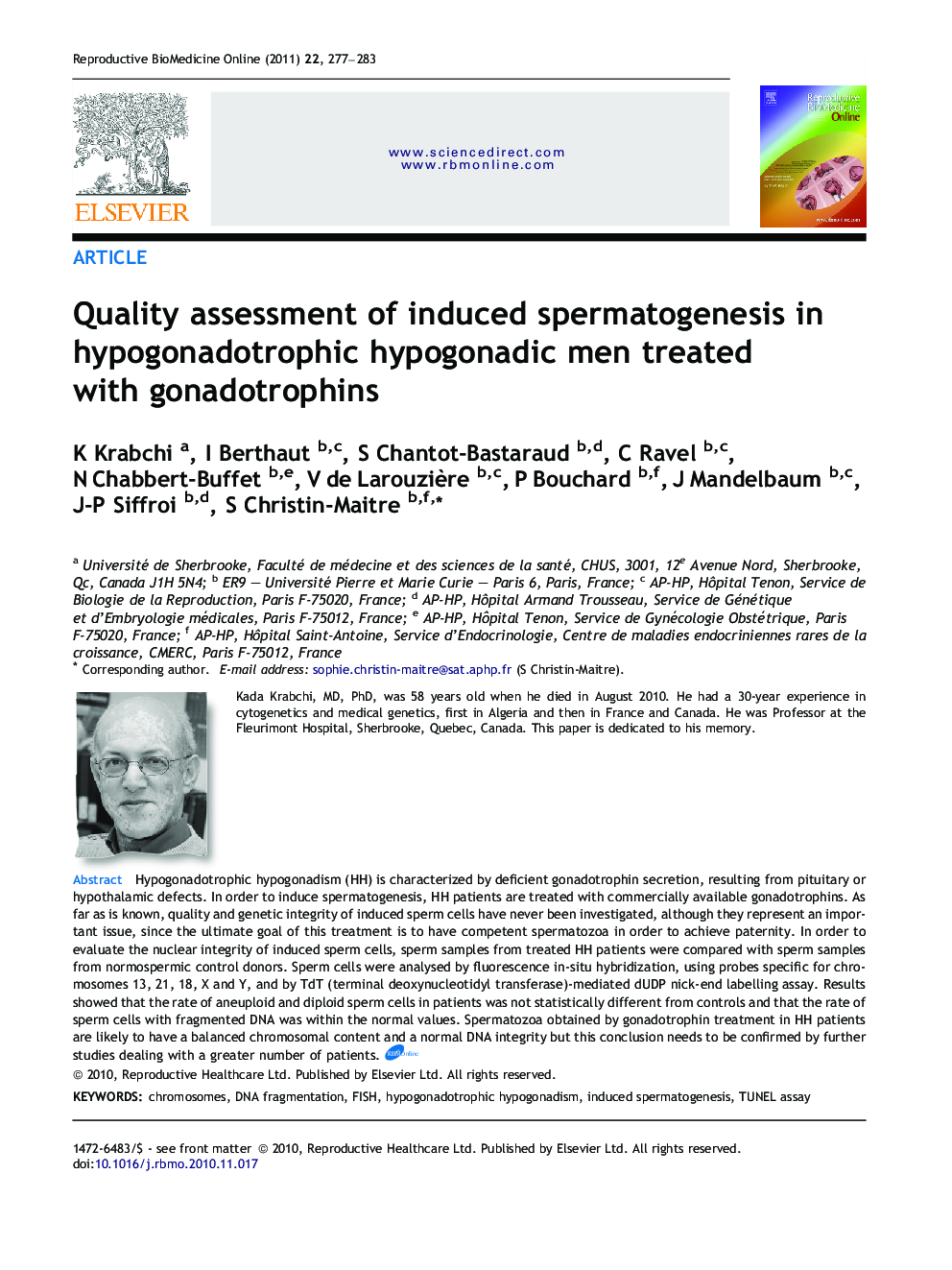| Article ID | Journal | Published Year | Pages | File Type |
|---|---|---|---|---|
| 3970680 | Reproductive BioMedicine Online | 2011 | 7 Pages |
Hypogonadotrophic hypogonadism (HH) is characterized by deficient gonadotrophin secretion, resulting from pituitary or hypothalamic defects. In order to induce spermatogenesis, HH patients are treated with commercially available gonadotrophins. As far as is known, quality and genetic integrity of induced sperm cells have never been investigated, although they represent an important issue, since the ultimate goal of this treatment is to have competent spermatozoa in order to achieve paternity. In order to evaluate the nuclear integrity of induced sperm cells, sperm samples from treated HH patients were compared with sperm samples from normospermic control donors. Sperm cells were analysed by fluorescence in-situ hybridization, using probes specific for chromosomes 13, 21, 18, X and Y, and by TdT (terminal deoxynucleotidyl transferase)-mediated dUDP nick-end labelling assay. Results showed that the rate of aneuploid and diploid sperm cells in patients was not statistically different from controls and that the rate of sperm cells with fragmented DNA was within the normal values. Spermatozoa obtained by gonadotrophin treatment in HH patients are likely to have a balanced chromosomal content and a normal DNA integrity but this conclusion needs to be confirmed by further studies dealing with a greater number of patients.Hypogonadotrophic hypogonadism (HH) is characterized by deficient gonadotrophin secretion, resulting from pituitary or hypothalamic defects. In order to induce spermatogenensis, HH patients are treated with commercially available gonadotrophins. As far as is known, quality and genetic integrity of induced sperm cells have never been investigated, although they represent an important issue, since the ultimate goal of this treatment is to have competent spermatozoa in order to achieve a paternity. In order to evaluate the nuclear integrity of induced sperm cells, sperm samples from treated HH patients were compared to sperm samples from normospermic control donors. Sperm cells were analysed by FISH, using probes specific for chromosomes 13, 21, 18, X and Y, and by TUNEL assay. Results showed that the rate of aneuploid and diploid sperm cells in patients was not statistically different from controls and that the rate of sperm cells with fragmented DNA was within the normal values. Spermatozoa obtained by gonadotrophin treatment in HH patients are likely to have a balanced chromosomal content and a normal DNA integrity but this conclusion needs to be confirmed by further studies dealing with a greater number of patients.
